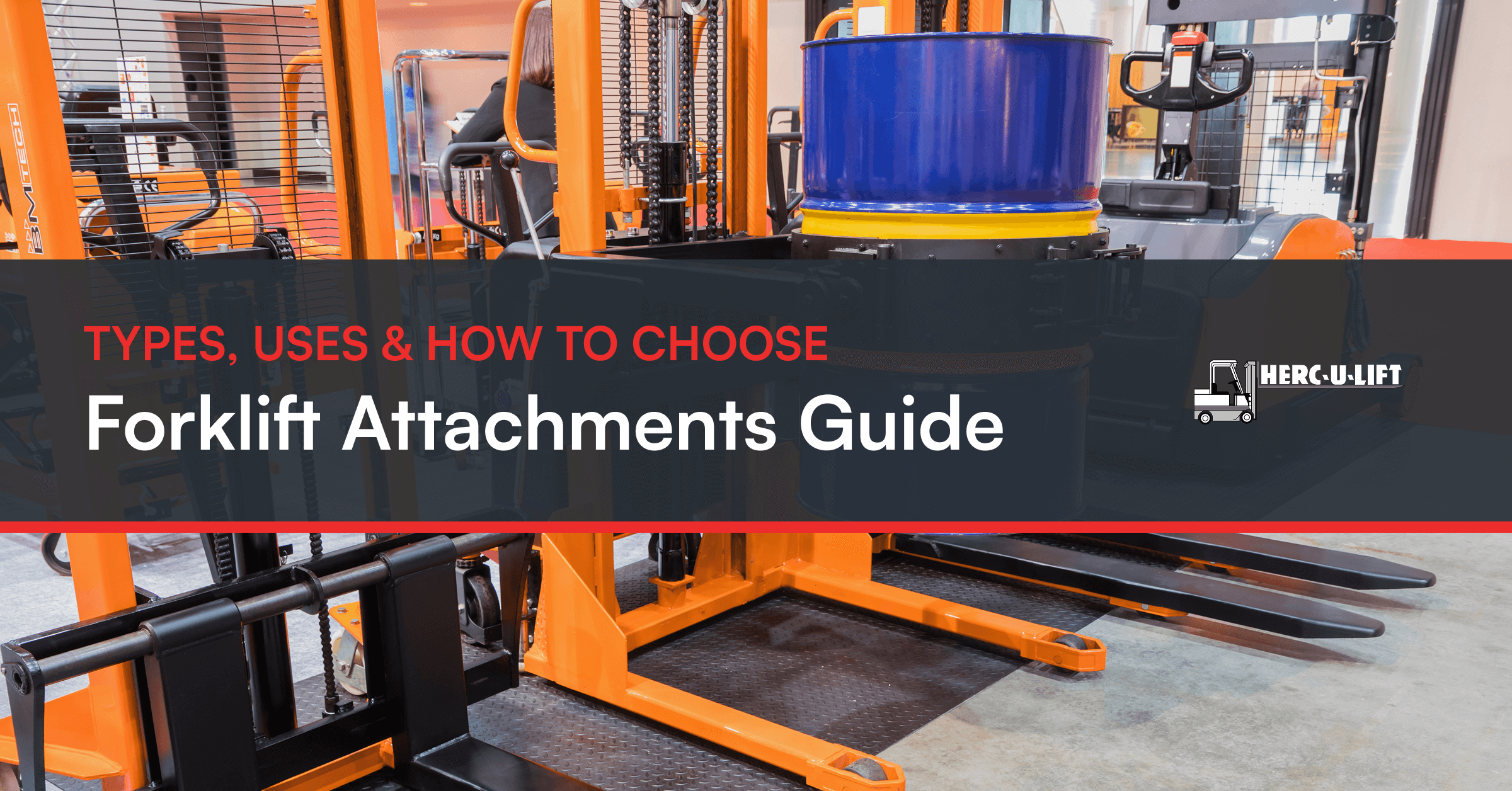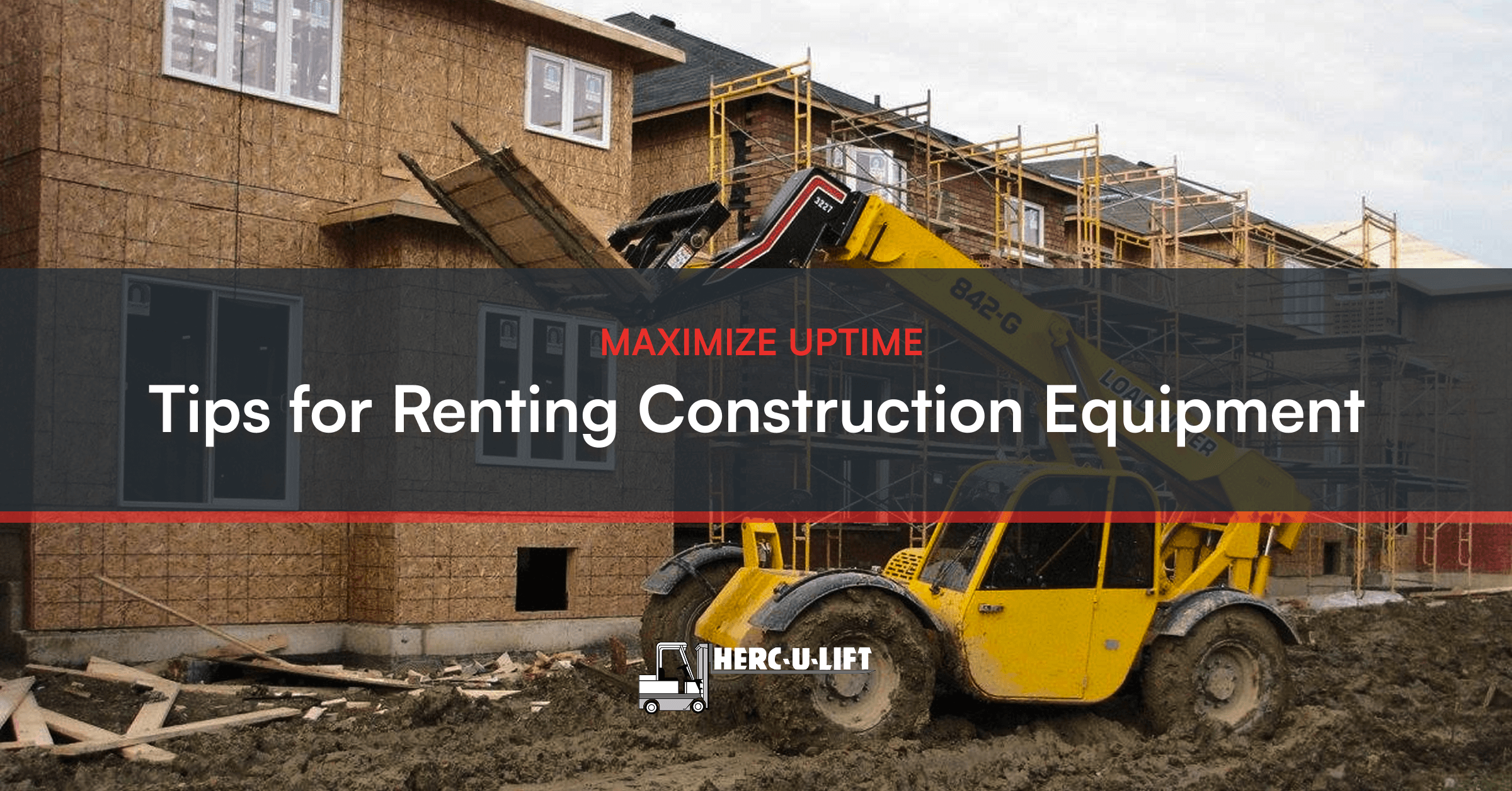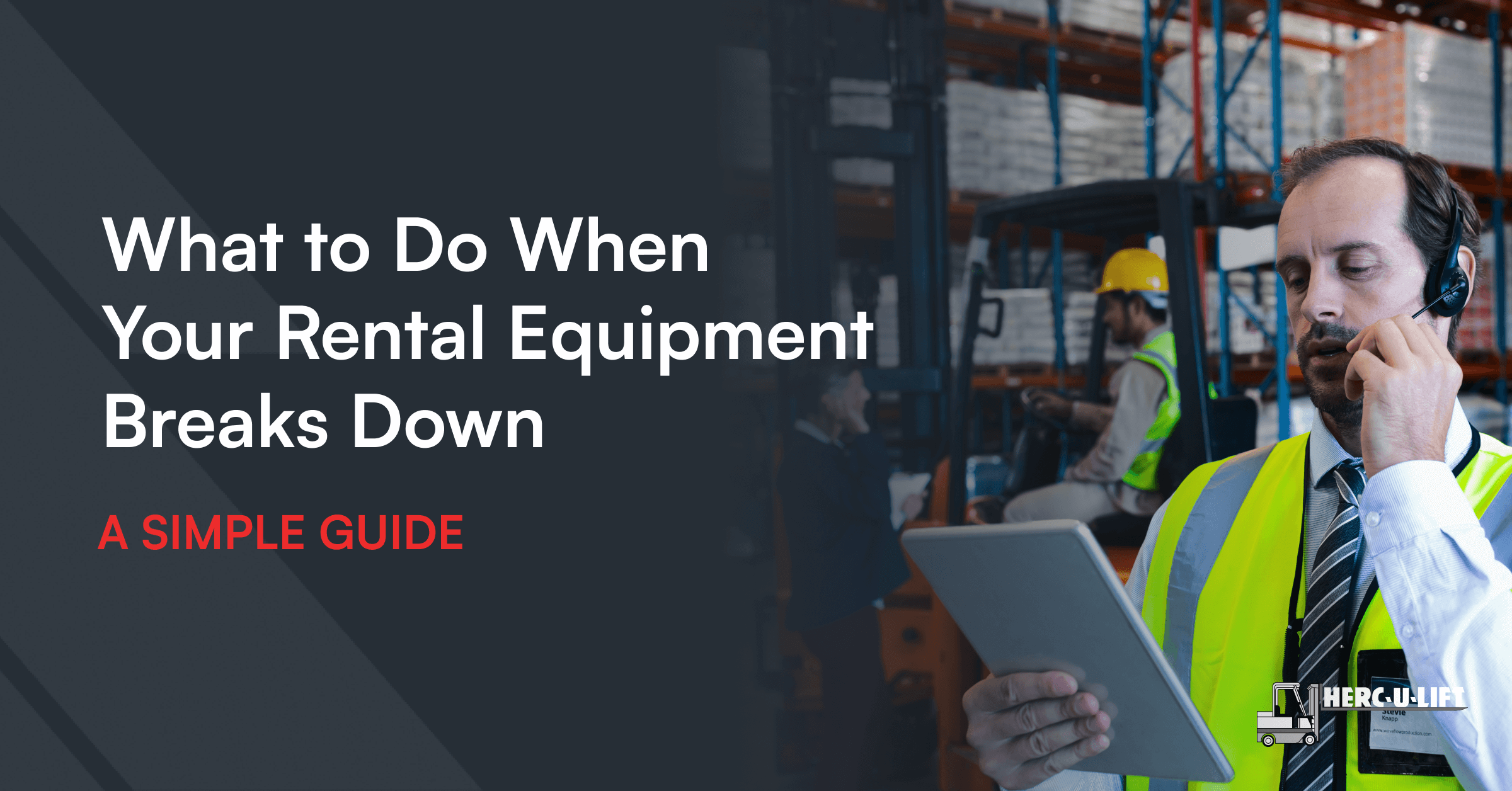Warehouse and logistics operations typically move fast. But how does your forklift adapt to changing job demands without buying new equipment? Simple. You use forklift attachments.
These tools turn a standard forklift into a multi-tasking machine. With the right attachment, your lift can clamp, rotate, extend, and more. This results in improved material handling, increased productivity, and reduced workplace risks.
This guide will walk you through the different types of forklift attachments. We’ll tell you about side shifters, clamps, rotators, and drum handlers, among others. We also talk about their real-world uses and important considerations when selecting one.
Whether you’re a first-time rental customer or a safety officer, we will help you make informed decisions. You’ll learn how to match the right attachment for your needs without compromising safety and efficiency.
What Are Forklift Attachments?
At their core, forklift attachments are tools or devices that expand a forklift’s capabilities. They are mounted to the forks or carriage to rotate loads, handle non-palletized items, or lift personnel without requiring separate equipment.
With an attachment, you can perform a wider range of tasks with your forklift. You can even avoid accidents by reducing manual lifting.
When choosing an attachment, several technical factors come into play, such as:
- Load center shifts: Attachments alter how weight is distributed.
- Hydraulic functions: Some tools require auxiliary hydraulic functions.
- Carriage class: Must match the forklift’s carriage mounting system.
And yes, if you’re wondering: your forklift can tip over if the attachment is too heavy or poorly matched. So, it’s always best to learn about each one’s function and use.
Common Types of Forklift Attachments (With Real-World Use Cases)
Side Shifters
Side shifters help operators quickly align pallets without backing up or turning the lift. With it, you can move the forks laterally (left or right) without repositioning the whole forklift. This is ideal for tight warehouse aisles or loading trucks with limited clearance.
Fork Positioners
Fork positioners are best for handling mixed pallet sizes or irregularly shaped loads. They make switching load types feel seamless instead of chaotic. Plus, they allow operators to hydraulically adjust fork spacing from the cab. No need to step off the machine!
Rotators
A rotator can rotate the carriage and load up to 360°. As such, they are ideal for emptying bins and waste containers without manual tipping. This tool is most useful in food plants, agriculture, and recycling facilities.
Clamps
Clamps work as the forklift’s “grabbing hands.” They hold on to items like big boxes, rolls, or cartons where pallets aren’t used. These attachments are common in retail appliance distribution, textile storage, and printing facilities.
Types of Clamps
- Paper roll clamps are for handling rolls of paper, fabric, or other cylindrical items that do not like being poked by forks.
- Carton clamps allow you to move large, fragile, or unpalletized goods, such as appliances or electronics.
- Bale clamps are most suitable for soft, compressed materials like cotton or textiles.
Fork Extensions
Having fork extensions is like giving your forklift longer arms. They help your machine handle loads that are just too long or bulky for regular forks. With this attachment, you can enjoy safer handling of oversized materials like furniture, pipes, or lumber.
Take note, however, that overextension can shift the center of gravity and increase the risk of tipping. So always check weight distribution and load charts to be sure.
Drum Handlers
Drum handlers are specialized forklift attachments that grip and lift heavy barrels vertically or horizontally. Basically, they turn a basic forklift into a barrel-hauling machine, making it safer and easier to move 55-gallon drums without spilling. These attachments are typically found in chemical plants, oil facilities, breweries, or beverage distribution warehouses.
Push/Pull Attachments
Push/pull attachments are designed to grip and move slip-sheeted loads without pallets. They push or pull loads into containers and platforms with greater ease. These attachments are best for large-scale shipping operations. In fact, they help users cut pallet costs, save space, and reduce shipping weight.
Multiple Load Handlers (Double Pallet Handlers)
Multiple load handlers (or double pallet handlers) can carry two or more pallets like a champ. In fact, they can slash loading time in half! These tools are best used in fast-paced material handling environments like beverage bottlers and distribution centers.
Man Baskets / Work Platforms
A man basket (or a work platform) is a forklift attachment that lets you safely raise personnel working above ground level. It features mesh floors, toe boards, and fall protection anchor points for compliant elevated access. Man baskets are perfect for ceiling repairs, light installation, and overhead maintenance.
Be warned that only OSHA/ANSI-compliant baskets with latches and safety features should be used.
Key Considerations When Choosing a Forklift Attachment
Load Capacity Adjustments
Attachments reduce the forklift’s rated capacity due to added weight and altered load center. This is called load derating. If you ignore derating, you might end up lifting more than your forklift can safely handle. Always check your forklift’s updated capacity charts after attachment installation.
Hydraulic Requirements
Some attachments (e.g., fork positioners, clamps) require auxiliary hydraulic lines. Improper hydraulic compatibility can cause control delays or attachment failure. Ensure your forklift has the proper connections and flow capacity before attaching any tool.
Jobsite Environment
Choosing the right forklift attachment means thinking beyond the load size. Consider where and how they will be used.
- Outdoor use. Go for durable, corrosion-resistant attachments. They can withstand exposure to the elements and uneven terrain.
- Indoor use with narrow aisles. Side shifters and fork positioners reduce the need for full forklift repositioning without sacrificing precision.
- General operational challenges. Always factor in visibility, surface conditions, and how often the load types change. An attachment that works in one setting may be risky in another.
Operator Training & Certification
OSHA requires operators to be trained on both forklifts and attachment usage. Besides, these attachments may change a forklift’s controls, visibility, or lifting behavior. Even the best operators need refresher training when new tools are introduced. Hoping your personnel would just “figure it out” is a shortcut to accidents.
Maintenance & Inspection
Just like forklifts, attachments need some love, too. Faulty attachments can cause dropped loads and equipment failure. They may also lead to accidents. Make sure to include forklift attachments in your regular maintenance plan. Inspect hydraulic clamps, rotating parts, and locking mechanisms often. Look for signs of wear or leaks. Keep things clean and lubricated.

Benefits of Using Forklift Attachments
Attachments promote efficiency. One well-equipped forklift can do the work of 2 or 3 machines. Tools like clamps and rotators also handle sensitive, high-value goods more safely. More importantly, the right attachment minimizes constant manual labor, which leads to fewer jobsite injuries.
When NOT to Use Certain Attachments
Attachments add capability but only when used correctly. Avoid these common missteps:
❗ Using an attachment that exceeds the forklift’s capacity or stability limits.
❗ Deploying complex tools for simple jobs, which can waste time and increase risks.
❗ Skipping operator retraining when introducing new equipment.
❗ Ignoring inspection and regular maintenance on hydraulic or mechanical components.






 →
→

